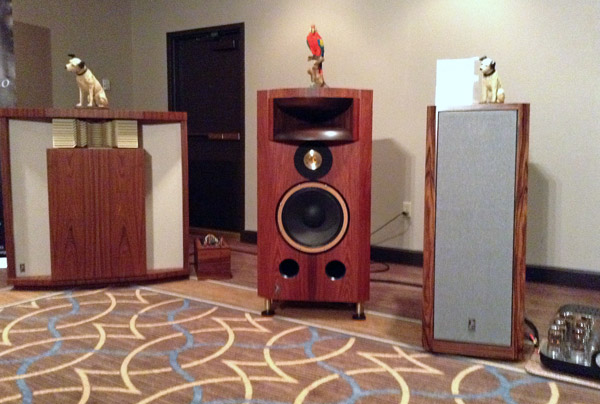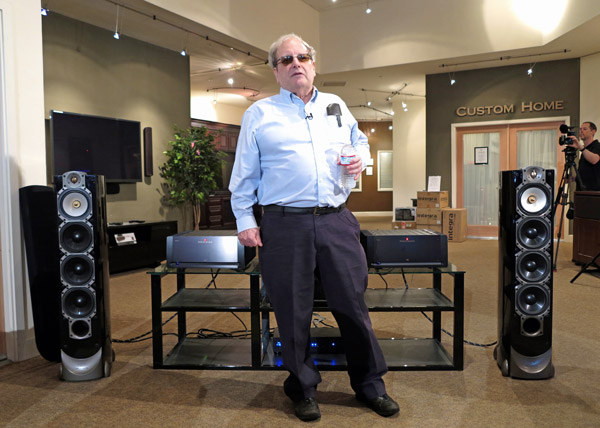LATEST ADDITIONS
Capital AudioFest 2014: The Evening Before
Albert Von Schweikert's Traveling Mr. Wizard Show
In Living Stereo Celebrates Mono
On the evening of July 24, the passing of EMT's classic OFD series of pickup heads was noted in singular style: In Living Stereo, the hi-fi and record store that represents EMT in New York City, invited their customers to drop by for drinks, snacks, and the opportunity to hear their favorite mono LPs played with OFD 15 and OFD 25 pickups on an otherwise all-Shindo system.
Parasound Shares its Strengths in San Jose
Know Thyself: Audio Existentialism
Recording of August 2014: Turn Blue
Nonesuch 7559795555 (LP/CD/HDtracks download). 2014. Black Keys, Danger Mouse, prods.; Kennie Takahashi, eng.; Collin Dupuis, Geoff Neal, Bill Skibbe, asst. engs.; Tchad Blake, mix. TT: 45:09
Performance ****
Sonics ****
There was a time when calling the Black Keys "sexy" would have been thought perversely stunted, given that they were a two-man, raw-as-hell, blow-me-down, frat-rock grinder that jammed and pounded and convinced everyone that their version of Tony Joe White's groove was something new and revolutionary.
Music Lovers' Open House in San Francisco, Friday
A Capital Show Starts Friday
Kenny Burrell: Midnight Blue from Music Matters Jazz
But now, after doing this with 112 titles, the company's proprietors, Ron Rambach and Joe Harley, are re-reissuing some of the greatest Blue Note titles on single-disc LPs cut at 331/3rpm . . .










